20 Ways to Relax this Summer
Looking for some easy ideas to help you chill out right now? These peaceful shortcuts—scents, sounds, tastes, and tricks that last anywhere from three seconds to 45 minutes—should get you there.

1. Garden your worries away
Get ready to get your hands dirty, because just 30 minutes of outdoor gardening can lead to a decrease of the stress hormone cortisol and an increase in mood, according to a 2011 study out of the Netherlands. Even caring for a window herb garden provides benefits as long as you’re playing with soil. Christopher Lowry, Ph.D., a researcher at the University of Colorado at Boulder, found that soil contains a bacterium that increases the release and metabolism of serotonin (a neurotransmitter) in the parts of the brain that control cognitive function and mood. Dig, plant, water, weed!
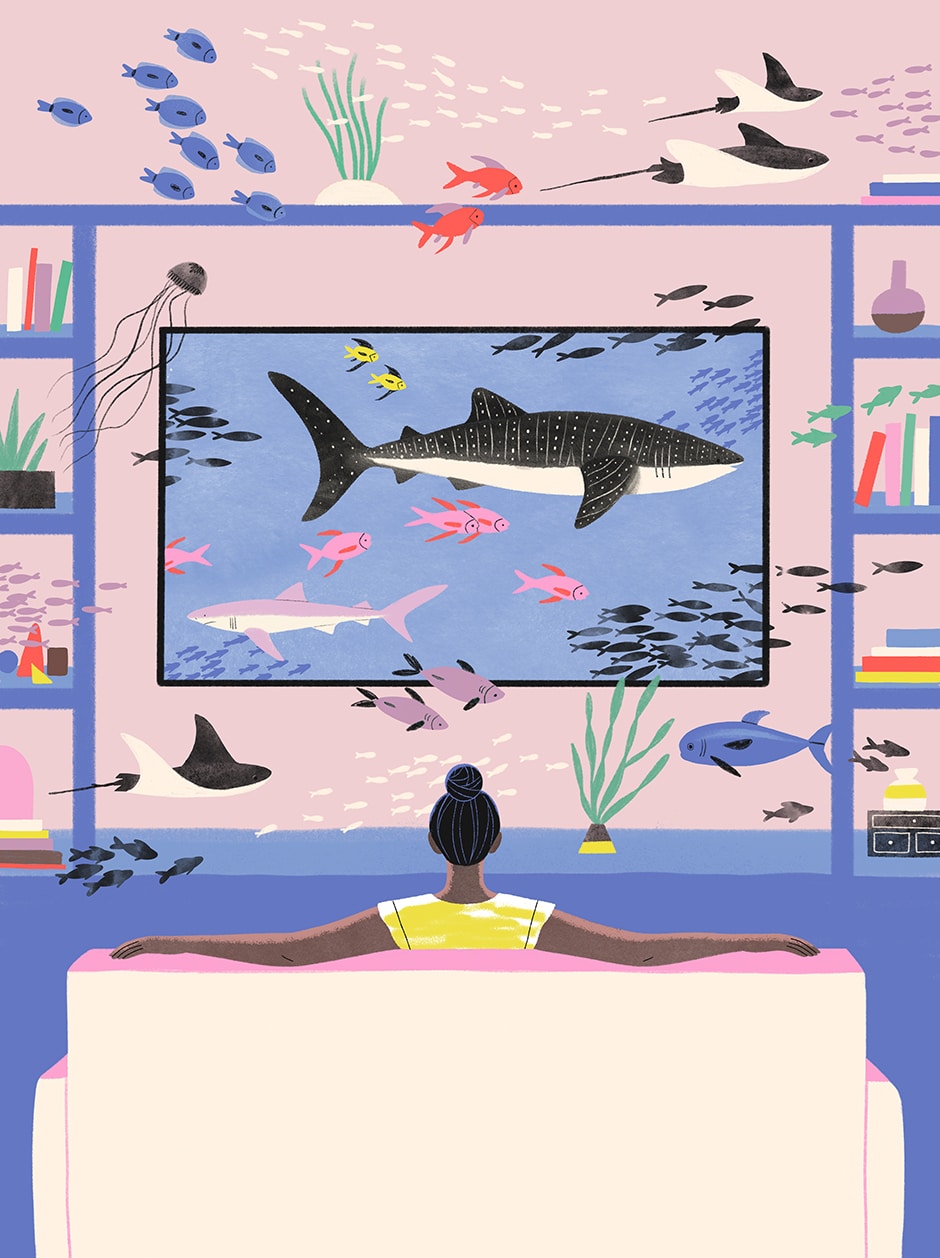
2. Gaze at fish swimming
There’s a reason your dentist has an aquarium in the waiting room. According to a 2015 study by British researchers, participants who watched an aquarium display had noticeable drops in blood pressure and heart rate. The unthreatening natural setting and the biophilia effect of seeing living things thriving were found to be restorative and calming. For the next best thing to being there, the National Aquarium in Baltimore offers three live streams of fish and jellyfish, and Explore, a philanthropic live nature-cam network, offers live coverage of manatees in Florida and gorillas in the Democratic Republic of the Congo and nearly 40 peaceful streams of birds around the world.

3. Eat a warm bowl of oatmeal
Oatmeal made from whole or steel-cut oats is full of brain-modulating compounds, like GABA (gamma-aminobutyric acid), which is “a relaxing neurotransmitter,” says Kathie Swift, integrative clinical dietitian and education director at the Center for Mind-Body Medicine in Washington, D.C. Swift says the body considers warm food like cooked oats soothing. She suggests topping oats with walnuts (containing serotonin and the hormone melatonin) and bananas (full of the pleasure chemical dopamine) for a truly peaceful bowl.
4. Try “beditation”
“Anxiety, Stress, and Sleep are the three most clicked-on buttons in any meditation app,” says Suze Yalof Schwartz, founder of Unplug Meditation studios in Los Angeles and creator of the Unplug app. With the press of a button, you can access one of 700 guided-meditation videos by the studios’ teachers (like the app’s popular 10-minute “When You’re Overwhelmed” practice) and transform your state of mind—literally: Research has found that mindfulness meditation can significantly reduce anxiety and stress and can even change the brain’s physical structure over time by shrinking the amygdala, the set of neurons responsible for fight-or-flight feelings. There are other great meditation apps available, so find one that works for you. Then make it a daily habit, suggests Schwartz. Before you even get out of bed in the morning, she says, “beditate.”
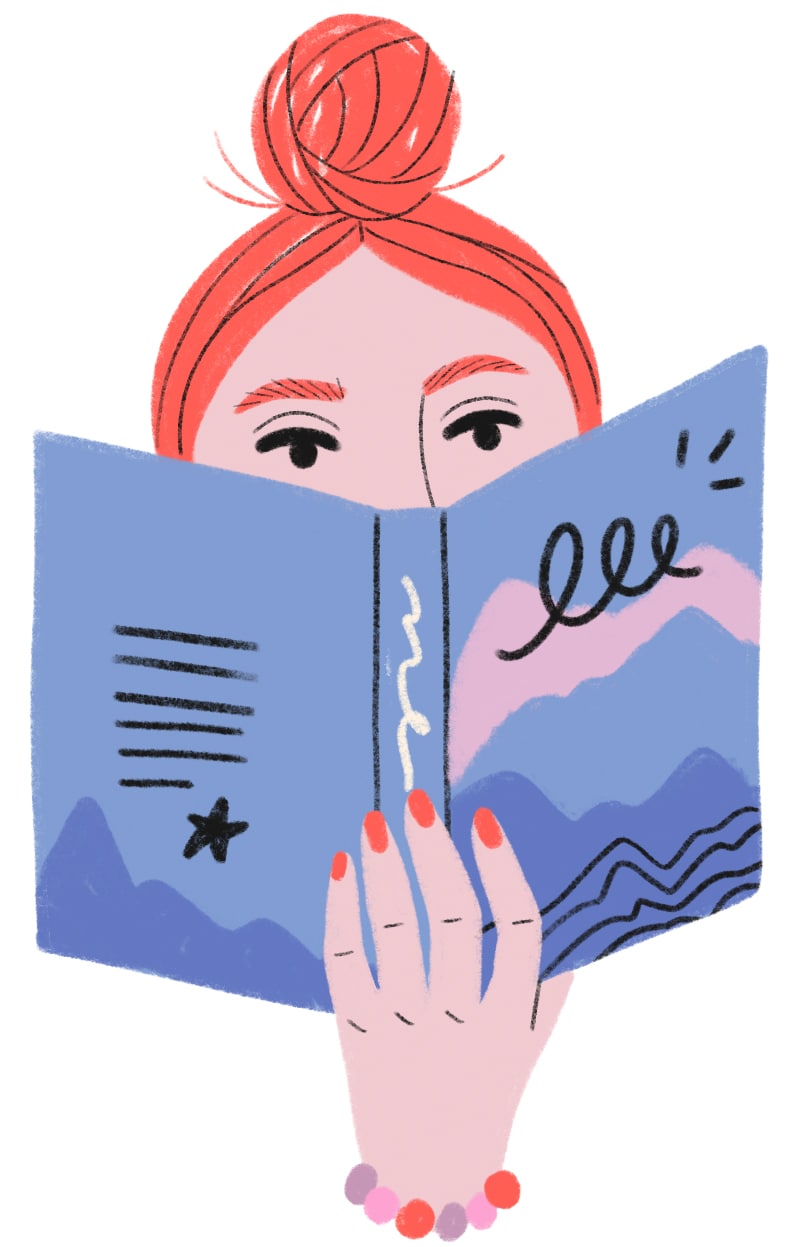
5. Read a book
Everyone says that a good book can transport you. Now we know it’s true, thanks to a 2013 study by Emory University, in Atlanta, that found reading novels connects to hubs of the brain associated with perspective taking, causing neural changes associated with physical sensation and movement as if you’ve been, yep, transported into the story. Try “bibliotherapy” for yourself by reading a sweeping tale and let the perspective of someone relaxing do the same for you.
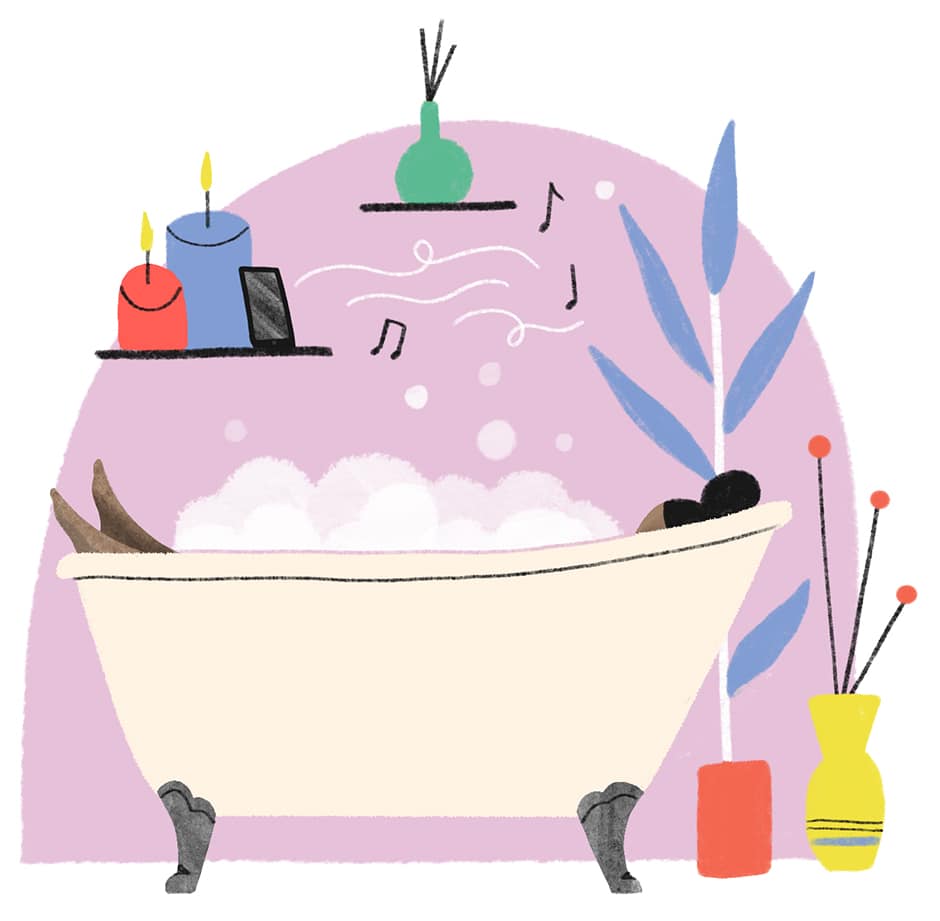
6. Slide into a bath
A 2018 Japanese study found that while a hot shower lowered stress levels in participants, full immersion in hot water (the study used temperatures as high as 104 degrees Fahrenheit) increases deep body temperature and stimulates the nerves that relax us. Plus, the buoyancy in bathing leads to relief from physical stress on the body. Adding Epsom salts can replenish the body’s level of magnesium, a mineral that gets depleted when we’re stressed.
7. Just breeeathe
So much anxiety comes from replaying the past and worrying about the future. We’ll be more relaxed if we stay in the present, says Diana Winston, director of mindfulness education at the Mindful Awareness Research Center at the University of California, Los Angeles. Focusing on breathing helps bring us back to the present. For two to three minutes, says Winston, “tune into the natural breath in your abdomen as it’s rising and falling, in the chest as it’s expanding and contracting, or at the nose, where you can feel the sensations at the tip.” For more guidance, the State: Breathing app is a guided breathing tool with sound and visuals that can calm you down or aid in sleep.
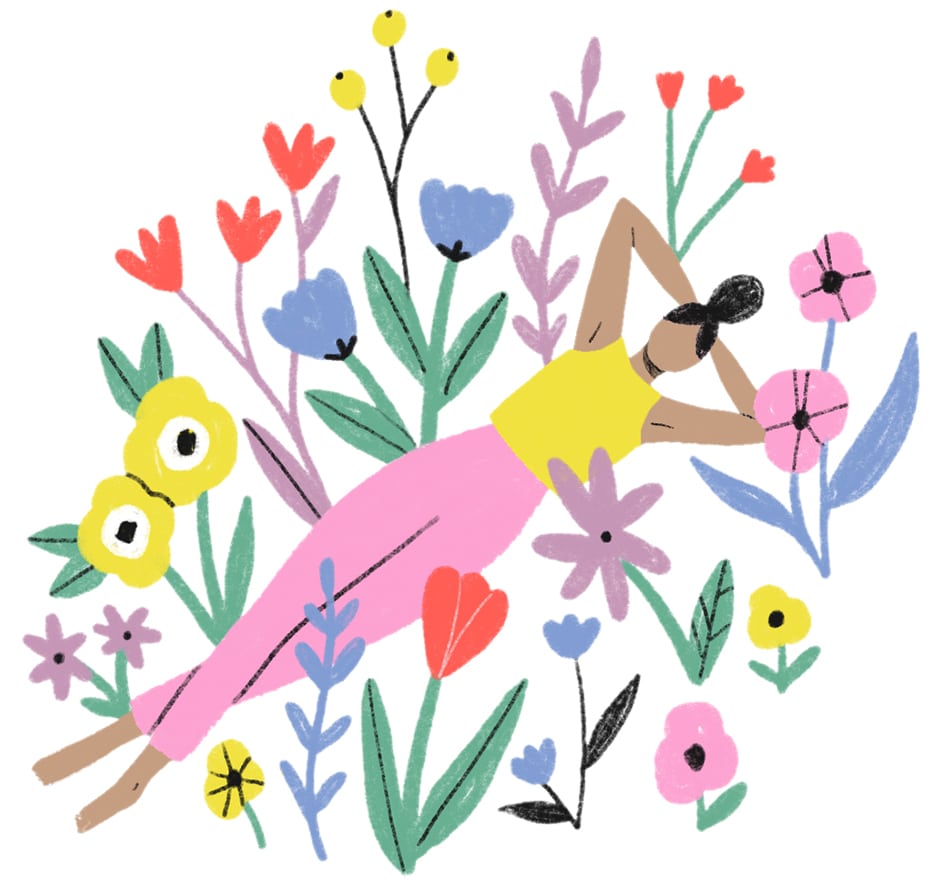
8. Go wild in nature
People who immersed themselves in nature for 20 to 30 minutes three times a week—in daylight, not during exercise, and away from the Internet, phone calls, and reading—saw lowered levels of stress biomarkers like cortisol, according to a 2019 University of Michigan study. If you can’t join Mother Nature physically, do it virtually: Search Spotify for babbling brooks or birdsongs, and visualize yourself in the center of a calming natural setting.
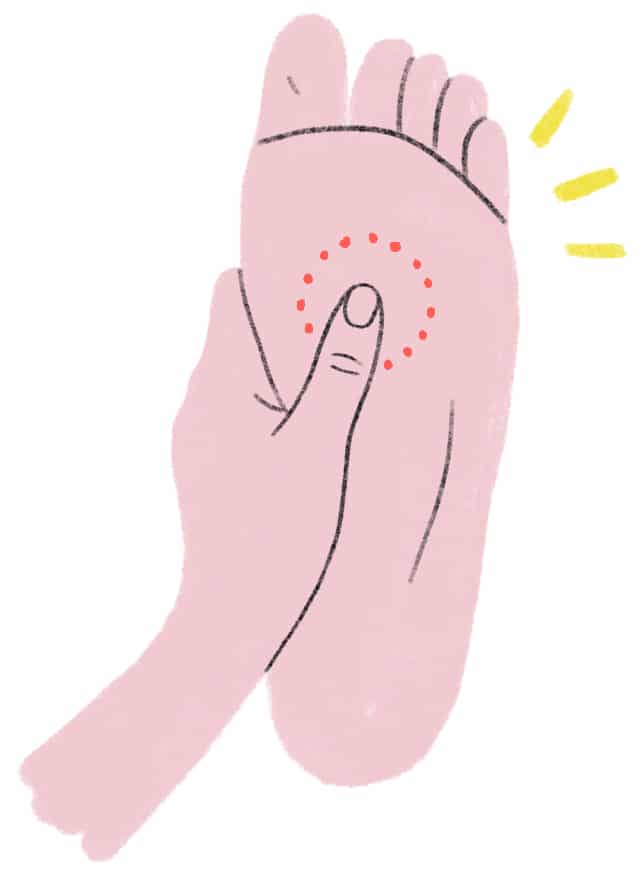
9. Pamper your feet
Research has shown that reflexology (treating pressure points on the feet) can help induce relaxation in patients with chronic pain, reduce pain after surgery, and ease anxiety in patients about to undergo surgery. A 10-minute foot massage three times a week was found to lower blood pressure among health-care staff working with the elderly. For similar benefits, try the truMedic InstaShiatsu+ Foot Massager ($250). Or massage your own feet for free: Place pressure with your thumb on the solar plexus reflex point, the small depression below the ball of your foot that, per Chinese medicine, is connected to the diaphragm and can mimic a calming breath.
10. Create a “chillax” playlist
In 2016 sound therapists wanted to create the most relaxing song in the world, so they worked with the British band Marconi Union to create the ambient track “Weightless,” which starts at a rhythm of 60 beats per minute (BPM) and slows to 50 BPM, encouraging the listener’s brainwaves to align to the rhythm and bringing the heart rate down at the same time. Plus, the lack of a repeating melody allows the brain to let go of the need to predict the next note, so you can fully relax. Take this as your cue to make the mellowest playlist in the world and listen when needed.
11. Scan your body
Guide yourself to serenity with yoga nidra, says Sara Ivanhoe, director of the YogaUSC program at the University of Southern California, in L.A.: “The idea is to reach a state that is beyond sleep” by relaxing each muscle. Get into a reclined position, close your eyes, and visualize scanning your body, one area at a time. “Be aware of your right hand, then right arm, your left hand, then left arm,” says Ivanhoe. Follow with your feet, legs, torso, head, and so on. By bringing awareness to each body part, you will naturally relax tense areas.

12. Laugh out loud
There’s a reason it seems impossible to LOL and feel anxious at the same time. Studies have found that laughter alleviates stress in the body by reducing blood pressure, decreasing cortisol, and increasing serotonin. And laughter is contagious: Watch videos of “newscasters cracking up” and try not to do the same!
13. Tuck your phone in a drawer
When is the last time your brain really had a break? “We are hardwired on an evolutionary biological level that when our brains perceive the need to give something our attention, it elevates cortisol,” explains David Greenfield, Ph.D., founder and medical director of the Center for Internet and Technology Addiction in West Hartford, Connecticut. Greenfield says this happens when you see your phone—even if it’s off. Ever feel compelled to check it, even though you’re not expecting any messages? The phone triggers an attentional stress response, so your body looks for a way to reduce it. To prevent the compulsion, remove your phone from your line of sight while you eat, sleep, or attend a social gathering and give your mind a chance to relax.
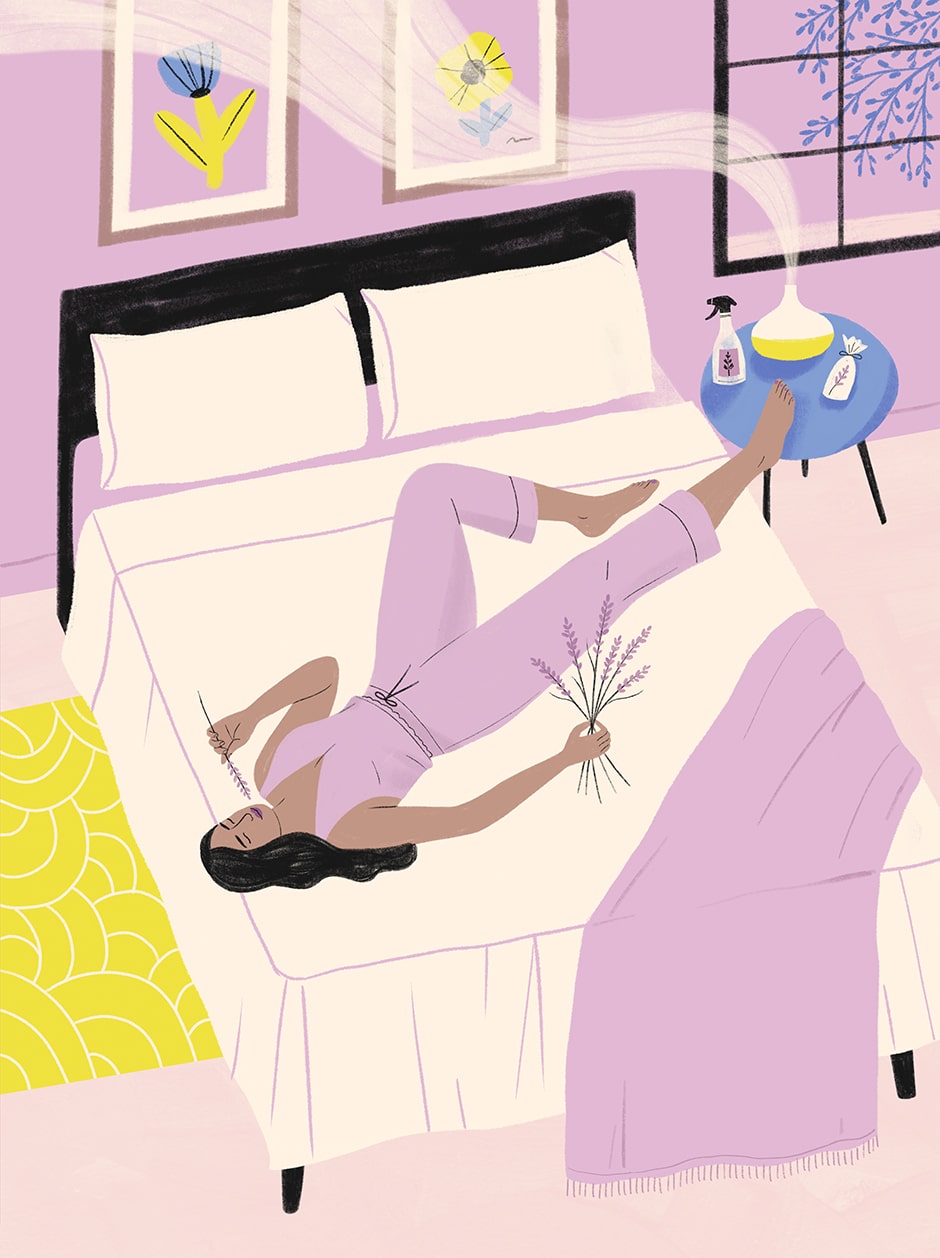
14. Layer on the lavender
Lavender still leads the pack in aromatherapy thanks to linalool, an alcohol in lavender extract that has anxiety-reducing effects. A 2018 study in Japan found that inhaling linalool-rich essential oils aids in relaxation. Put a few drops of lavender essential oil into a diffuser in your bathroom or office. (We like the Muji Ultrasonic Aroma Diffuser; $70) Or spray an essential-oil mist onto your couch or bed pillows. (Clairmont Farms Face and Pillow Mist is a fave; $14)
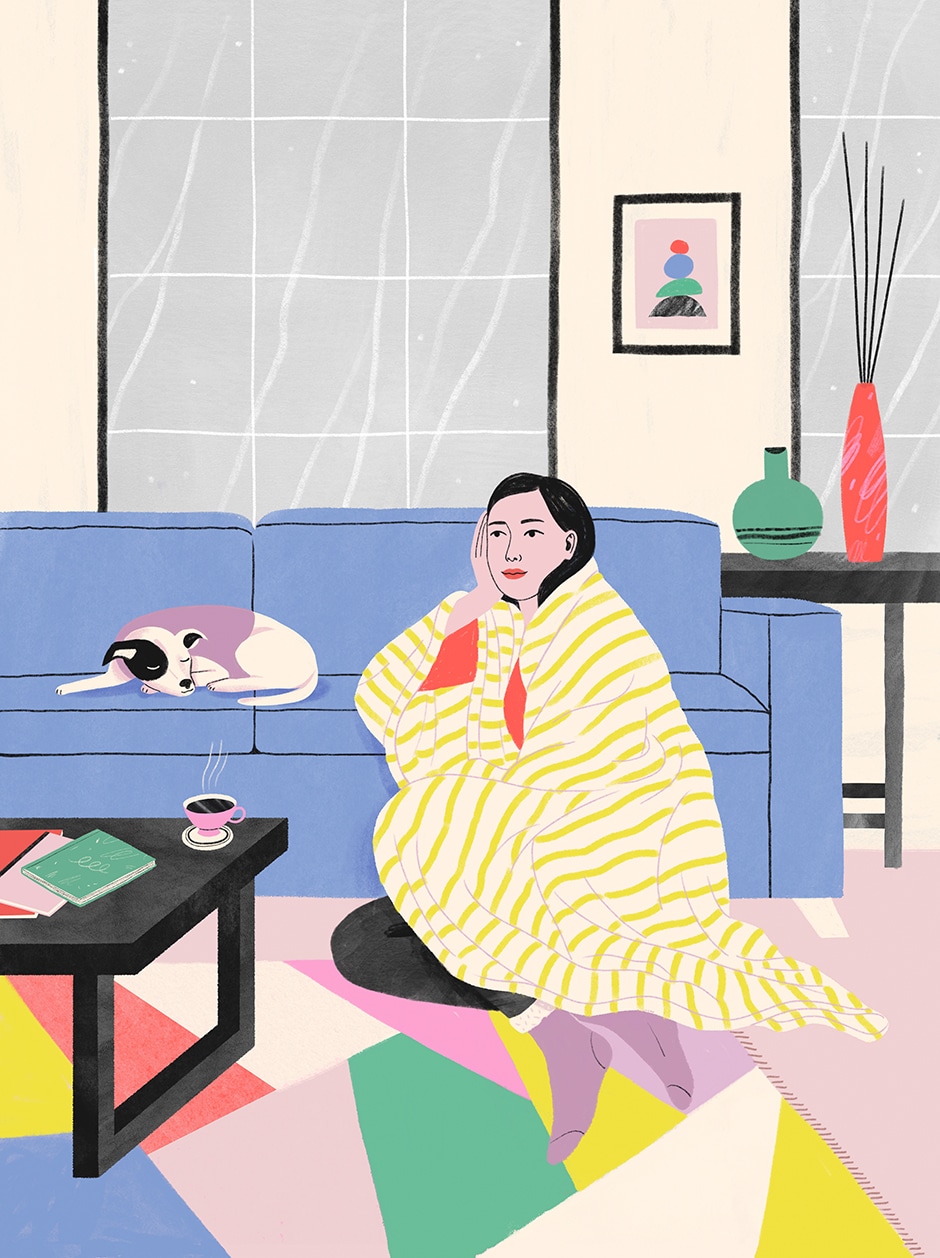
15. Swaddle yourself
Research has shown that wrapping a baby in a swaddle can trigger a calming response in the body and mind—so why can’t grown-ups try it? Shift your own body into relaxation mode by swaddling yourself in cozy sweats, chunky socks (like Indigo’s Waffle-Knit Reading Socks; $18), or a weighted blanket (try the Luxury Weighted Blanket by Nest Bedding; $159). Penn Medicine, the renowned medical center in Philadelphia, found that the “pressure therapy” of a heavy blanket can calm you by activating the parasympathetic nervous system and lowering your heart rate.

16. Get your Frida on
Play with clay, paint some paper, or color inside—or outside—the lines. It doesn’t matter the medium: A 2016 study by Drexel University, in Philadelphia, found that 45 minutes of creative activity significantly lowered levels of cortisol in the body, lessening the stress of the participants—regardless of talent level. The reason? Subjects felt free from constraints and able to lose themselves in the flow of the craft.
17. Kick your feet up—but really
“It’s almost impossible to relax if you don’t do something for your body after the tension from the day gets trapped in it,” says Ivanhoe. A movement that can help release tension? The legs-up-a-wall pose. “There’s a constant pressure in the valves of the blood vessels in your legs that work hard all day to pump blood back up to your heart,” says Ivanhoe, so raising your legs upside down “gives it all a break.” Curl into a fetal position with your hips six inches away from a wall, then roll onto your back and take your legs up the wall. “You want your legs straight but in a relaxed position,” she says. You can put a folded blanket under your hips for some squish. Relax for five minutes before rolling back into a fetal position, counting to three, and then getting up slowly.
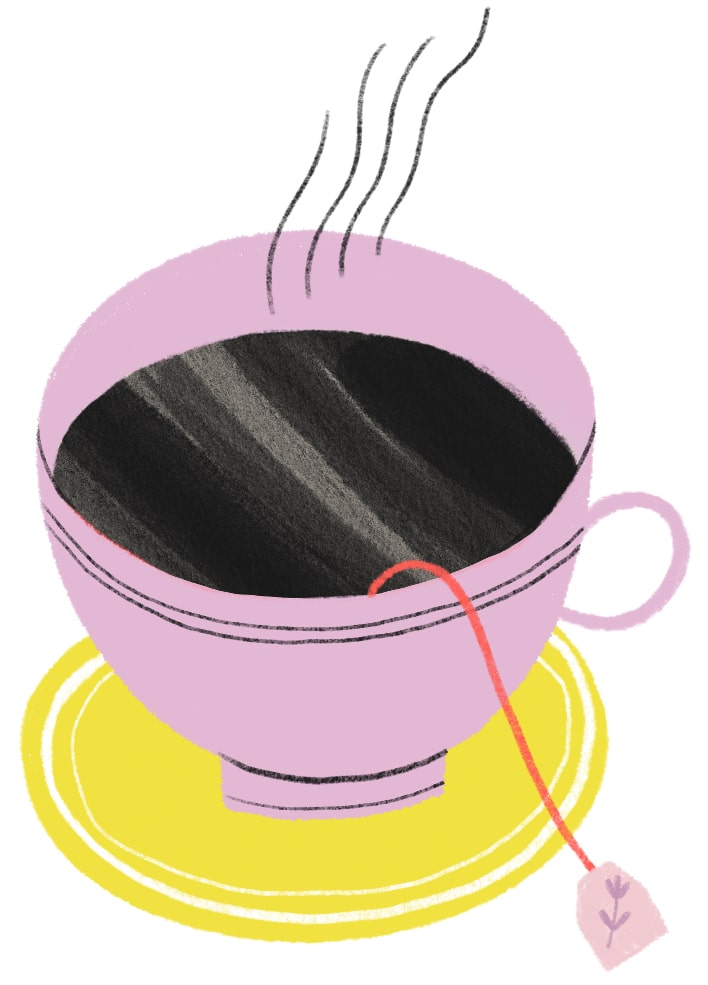
18. Set a tea time
If you want to relax tea-wise, go back to black. “White, green, black, and oolong teas all contain the relaxing compound GABA,” says Swift, but “black tea is also shown to lower cortisol levels,” a fact backed up by a 2012 Australian study that found black tea also lowered blood pressure.
19. Yawn (on purpose)
“There is a neurological system in your body that you can trigger at will to help yourself feel less stressed,” says psychologist Rick Hanson, Ph.D., senior fellow at the Greater Good Science Center at the University of California, Berkeley, and author of Neurodharma. This is the parasympathetic nervous system, the portion of your nervous system that relaxes your muscles and “helps you feel peaceful,” Hanson says. To kickstart it in three seconds, try yawning, he suggests: “Yawning activates the parasympathetic nervous system on inhalation and the sympathetic nervous system on exhalation.” Translation: It promptly tells your body to chill a little.

20. Pet a pet
Want to feel as chill as a napping cat? Pet one. A 2019 study out of Washington State University found that 10 minutes of petting either a dog or a cat led to a significant reduction in the stress hormone cortisol. And not just for you: Fido feels this benefit, too!
By Amy Spencer | Illustrations by Monica Garwood
This article originally appeared in the Summer 2020 issue of Reveal, Drew & Jonathan’s lifestyle magazine.





